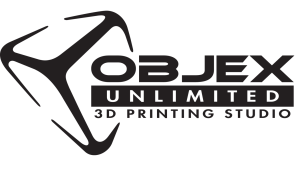
1. Have some 3D printed samples handy. Having some 3D printed items that are the most closely related to the commercial interests of your client is a really good idea:
“For example, if your customer is in tool and die making, 3D print a jig or a fixture. If your client is an automotive designer, show how they can design and build inexpensive 3D-printed car parts from a 3D scan. Show display companies a 3D-printed booth mock-up. If they’re willing to give you an STL or CAD file for test printing, that’s even better!”
Also ensure you include the full range of materials, such as metal, carbon fiber, wax, nylon, and rubber, and the full range of color options too. This will give them a much better understanding of exactly how you are capable of helping them, fitting their needs as closely as possible.
2. Know relevant industries. There are more and more industries getting their feet wet in 3D printing: medical, education, defense, green technology, engineering, aerospace, automotive, consumer goods, art and architecture, etc. Knowing the businesses in your immediate geographic area will help you understand how far-reaching your own 3D printed services can expand. Also, other good leads can be found by investigating “tradeshows (booth design), display companies (indoor/outdoor, POP), ad agencies (2D artists), industrial and commercial prototyping, packaging, marketing firms, premiums and incentives.”
If you know the needs and activities of your surrounding business community, government, and non-profit sectors, you will be better at showing them how 3D printing relates to them.
These three general tips are an excellent way to polish your 3D printing entrepreneurial spirit with practical considerations that relate to many kinds of services and industry demographics. You can also find a wealth of information online, beginning with Objex Unlimited 3D Printing Studio’s own website, which includes equipment, services, information about the company, and more resources. Tell us your thoughts on this information in the 3D Printing Tips forum over at 3DPB.com.
Good Luck!
